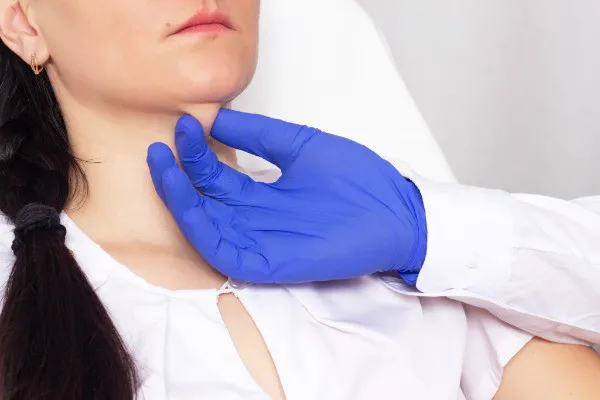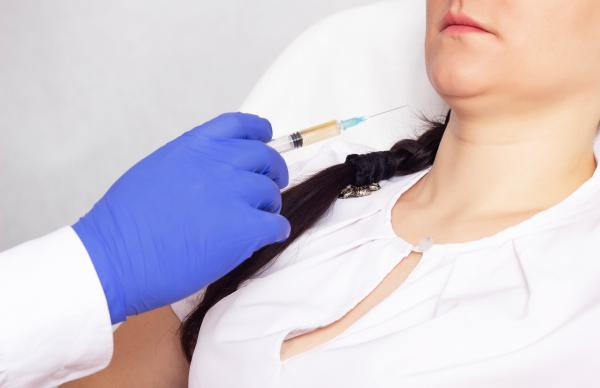
From Fat to Fab… Without the Complications
Mr Arturo Almeida delves into the hot topic of complications after fat-dissolving injections and shares his unique framework to prevent it
Fat-dissolving injections (FDIs), such as Aqualyx, have established themselves as an effective, non-surgical solution for reducing localised fat deposits. For patients seeking to reduce stubborn fat deposits in areas like the abdomen, thighs, or the annoying double chin, FDIs offer quick, effective results and can be combined with other body contouring treatment modalities. While FDIs are generally safe, the ability to prevent and manage complications is a skill every aesthetic practitioner must master.
In this article, I’ll explore not only the common and serious side effects associated with fat-dissolving injections but also a unique framework I have developed through 16 years of experience using FDIs that will help to prevent both side effects and complications. Shall we begin?
Understanding fat-dissolving injections
FDIs typically utilise deoxycholic acid, a compound naturally found in bile, to break down and destroy fat cells. Once the fat cells are broken down, an inflammatory reaction will occur where the macrophages remove the cell remnants and the released fat is eliminated through the lymphatic system. Typically, an average of three sessions are required. Though generally safe when administered by a trained professional, FDIs do carry the risk of complications, especially if proper care and technique are not followed.
Complications can range from common side effects like swelling to more serious issues such as skin necrosis.
Managing common side effects
While most FDI treatments proceed smoothly, some common side effects are expected and must be managed to ensure patient comfort and satisfaction. Swelling, bruising, and pain are the most frequent complaints, but with proper management, they are generally short-lived.
Swelling, which occurs in up to 87% of patients, is caused by the inflammatory response as fat cells break down. Although swelling is part of the expected recovery process, it can cause anxiety for patients if not properly managed. Practitioners should reassure their patients that this is a normal response and will subside within a few days to a few weeks. Compression garments can help reduce swelling and speed up the recovery process by promoting lymphatic drainage. It’s also important to advise patients to avoid NSAIDs, as these can interfere with the necessary inflammatory response.
Bruising affects approximately 72% of patients and is typically caused by needle insertion. This minor issue can be minimised by applying cold compresses immediately after treatment and advising patients to avoid medications (unless prescribed for a medical condition) or supplements that may affect coagulation before their procedure. Bruising generally resolves within one to two weeks, and topical treatments such as arnica gel can speed up the healing process.
Discomfort/pain is normally well tolerated, and in many cases, perceived just like “muscle cramps” after exercise. The use of local anaesthetics before treatment or mixed with the product can significantly reduce discomfort. Over-the-counter pain medications, such as paracetamol, are effective for managing post-procedure pain. However, if the pain persists, it’s important to schedule a follow-up consultation to rule out any complications.
Numbness is another common side effect, with 66% of patients reporting temporary nerve irritation. This usually resolves within a few weeks and does not typically require intervention beyond reassurance.

Other possible side effects
Induration, perceived as tissue hardening at the treated area, can occur in about 23% of patients. This hardening is part of the body’s inflammatory response to the breakdown of fat cells. Gentle massage can help prevent or alleviate induration, but in more persistent cases, deeper massage or physical therapy may be required.
Inflammatory nodules, occurring in around 13% of patients, are typically the result of localised inflammation in response to the injected solution. These nodules are usually harmless and resolve on their own, but in cases where they persist, intralesional steroid injections can be used to reduce inflammation.
Hair loss has been reported in up to 9% of male patients treated at the submental area. It is normally seen as patchy hair loss in this region and may prevent an even growth of the beard. This is a temporary side effect, with no specific treatment, and it resolves on its own, although it may take up to eight weeks for full recovery.
Managing serious complications
While much less common, serious complications can occur if FDIs are not administered correctly. Skin necrosis and dysphagia (difficulty swallowing) are among the more severe risks.
Skin necrosis, although uncommon, can occur when the lytic effect of deoxycholic acid affects the cell membrane of the epidermis and/or dermis cells. This mechanism is completely different from dermal fillers, where there is a compromise in the blood supply, whether extrinsic (compression of an artery) or intrinsic (intravascular occlusion by the filler). For this reason, symptoms are almost never acute but more subtle. Initially, a prolonged inflammatory reaction is seen, followed by hardening of the tissue and finally necrosis. This is a serious complication that requires immediate intervention, with oral antibiotics and effective wound debridement and management. The few case reports published show a restitutio ad integrum when properly managed. Exquisite
injection technique and adherence to the 3R® Rule are essential for preventing this life-altering complication.
Dysphagia, which most often occurs when treating submental (double chin) fat, is another rare but serious complication reported in less than 2% of cases. This occurs when the marginal mandibular nerve is injured, affecting the ability to swallow. In most cases, dysphagia resolves with time, but severe cases may require intervention. Dietary adjustments and possibly medical treatments, such as muscle relaxants or oesophagal dilation, may be needed.
Severe allergic reactions, while extremely rare, can also occur, making thorough patient screening before the procedure crucial. Any previous allergic reactions to injections or medications should be noted, and a patch test might be advisable in high-risk patients. Should an allergic reaction occur, intravenous steroids should be administered, but in the rare case of anaphylaxis, epinephrine may be required.
The 3R® rule for prevention
One of the cornerstones of my practice and training is the 3R® Rule, a framework I developed specifically for preventing complications in aesthetic procedures, particularly with FDIs. The rule is simple yet highly effective:
Right patient: Selecting the right candidate for FDI is crucial. Not every patient is suited for fat-dissolving injections. For instance, patients with loose skin or certain underlying health conditions may be at greater risk for complications. Thorough screening and consultation are key to ensuring you have the right patient in your treatment chair.
Right area: This refers to understanding the anatomy of the area being treated. Certain areas are more prone to complications due to their proximity to blood vessels, nerves, or other sensitive tissues. Knowing the correct injection depth and location is crucial for avoiding issues like skin necrosis or prolonged swelling.
Right technique: Even with the right patient and area, poor technique can still lead to complications. This is related to both the choice of product - not all FDI are equal - as well as deep knowledge of the chosen agent .Right technique involves not only the correct injection depth and product distribution but also the volume of the solution used. Administering too much product in one area can lead to unnecessary inflammation, while too little can result in ineffective treatment.
My 3R® Rule is not just a guidelin – it’s a commitment to delivering the safest and most effective treatment possible.
Patient education and aftercare
Preventing complications isn’t just about what happens in the clinic – it also extends to the aftercare you provide. Patient education plays a pivotal role in minimising complications. Patients should be fully informed about what to expect, including potential side effects, how long they will last, and when they should contact you if something feels amiss.
Clear aftercare instructions are crucial. Advise patients to wear compression garments when necessary, avoid strenuous exercise for a few days, and refrain from taking certain medications that may increase the risk of bleeding or swelling.
Follow-up appointments should be scheduled as part of the standard procedure. These appointments allow you to monitor the patient’s recovery and catch any potential complications early.
Mastering complication management
In conclusion, prevention is always better than cure. By selecting the right patients, understanding the anatomy of the treated area, and using the correct techniques, complications can often be avoided. However, in the rare instances when complications do arise, early intervention and management are key to ensuring positive outcomes.
As aesthetic practitioners, our responsibility is to not only provide treatments but to offer safe, effective solutions that enhance our patients’ quality of life. By mastering the prevention and management of FDI complications, you set yourself apart as a practitioner committed to excellence.
